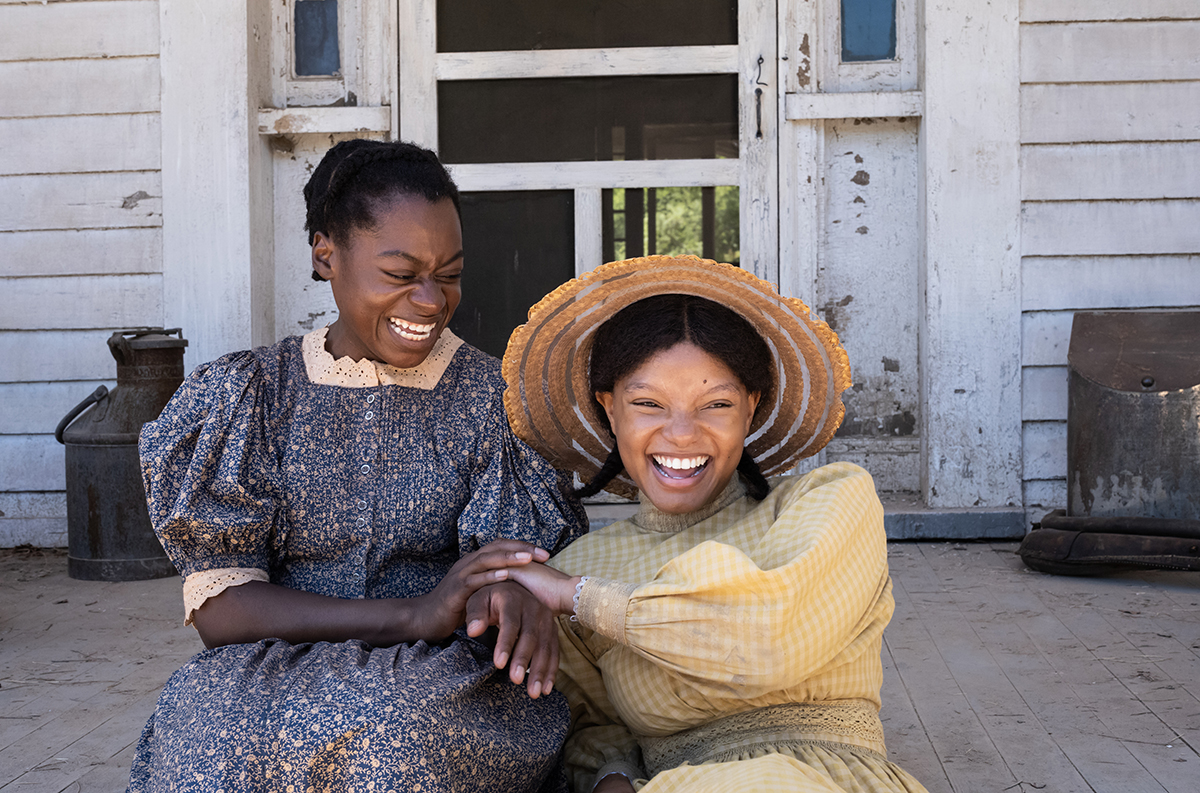Vibrant, moving, and epitomizing the struggles and hardships in life with the ability to shine brightly regardless, The Color Purple sparkles. The cast delivers top-tier performances, the direction and cinematography sing, and every scene matters. Besides the acting, the music is playlist-worthy with its mind-blowing songs that make me recall the dance numbers accompanying each track. The Color Purple celebrates not just sisterhood but, more importantly, Black sisterhood, reminding viewers of the importance of supporting and uplifting each other.
Based on Alice Walker’s novel with a screenplay written by Marsha Norman and Marcus Gardley, The Color Purple is director Blitz Bazawule, who surprises with the breadth of this musical. The film is set in the early 1900s as young Celie (Phylicia Pearl Mpasi) and her sister Nettie (Halle Bailey) find solace, confidence, and love in each other. Unfortunately, with an abusive creep for a father who hands Celie off to Mister (Colman Domingo)—a man at least twice her age—the sisters find themselves separated. The Color Purple depicts a generation of women, with Celie at the center, as they fall into each other’s orbit.
The Color Purple Cast Deserves Accolades

Fantasia Barrino plays the adult Celie, and her performance is stunning as she transforms throughout the film. With every scene, we ache for her pain and insecurity because of what she suffers. Colman Domingo, as the abusive Mister, is outstanding. He brings anger to the role but also an underlying bitterness and vulnerability that Domingo fully captures.
Taraji P. Henson as Shug Avery is sexy, warm, comical, and pained. Like Celie, we cannot take my eyes off her. It’s beautiful how the love between Shug and Celie plays onscreen, emblazoned with passion and care. Corey Hawkins and Danielle Brooks are as delightful as Harpo and Sofia, respectively. Corey is funny, caring, and lost with a father like Mister spilling poison in his ears. Danielle Brooks’ acting makes me forget it’s a character she’s playing, which is the art’s best and highest form.
As Spielberg made the movie decades ago, every actor had huge shoes to fill, yet they each nailed their roles. They do not copy previous performances but bring a touch of themselves to make the characters their own.
Highlights How Harm as Well as Love Expand

While the cast of women gravitate to each other, sometimes making a mistake because of their own harsh lessons, the group primarily cares for each other. It’s how friendships should be – when one falters, the others take up the slack to reel them back in. I see this between Shug and Celie’s and Sofia and Celie’s relationships. It’s not solely beautiful, as we see how awful lessons get passed down.
On the other hand, Harpo’s love for Sofia is evident, even as he desires a wife who obeys. He sees the way Celie defers to Mister, his father, but ignores the abuse that inspires her fear. As the film progresses, it’s apparent that Mister’s father, played by the fantastic Louis Gossett Jr., poisoned his son, too, creating a toxic cycle. With these stories, The Color Purple amplifies Black sisterhood and emphasizes the importance of breaking generational harm.
Colors Come Alive Onscreen With Bursts of Songs

It’s not just the costumes but Blitz Bazawule’s direction. As each woman finally comes into her beauty and self-assurance, the colors expand into eye-catching shades that had me double-taking. The most stunning visual is of Celie singing and strutting with Shug in a bathtub at the center. It’s fantastical, but many people escape into fantasy when life is too complicated or monotonous.
The Color Purple is a film at once familiar—for those who saw the 1985 flick or read the book—and entirely fresh and new. With the songs and dancing, the movie swells into a full-course meal of life. Strife, pain, trauma, and forgiveness all come alive in a gorgeous cascade of moments. Brighter, bolder, and humming with energy, The Color Purple is a cinematic joy you’ve got to experience.

